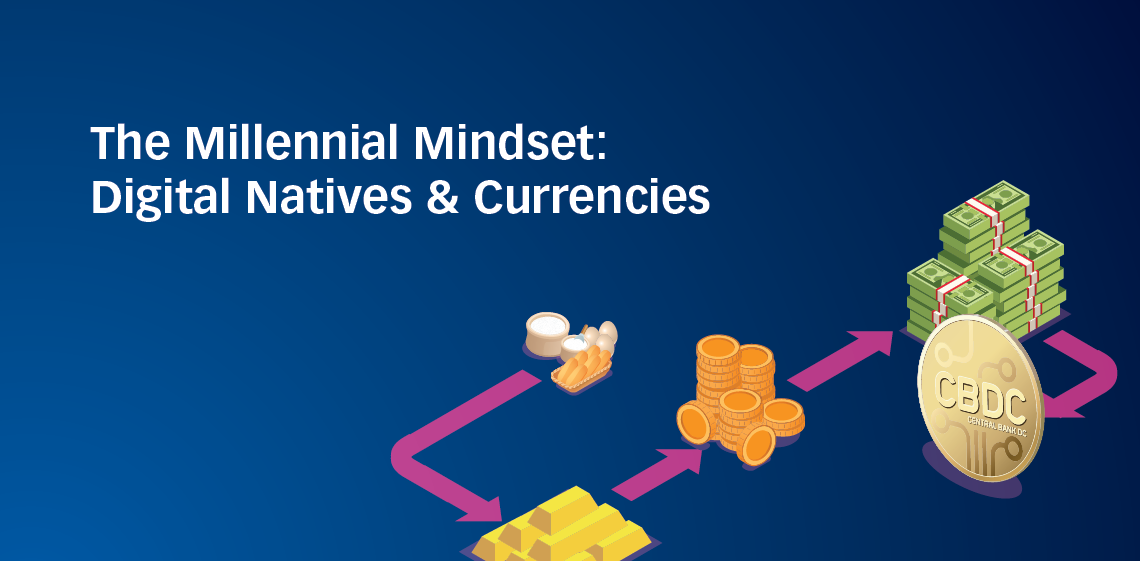
October 2, 2020
The Millennial Mindset: Digital Natives & Currencies

From coins and banknotes being introduced around the 7th century, to card payments being launched in the 1960s, payment methods have been ever evolving since the Mongol Empire. But what defines the payment methods we choose to accept and sustain in an accessible and interconnected world?
A generation that is often underrated in its potential to disrupt the financial services landscape is now leading the shift towards digital transformation. This shift is starting with mobile payments, presently the most popular payment method satisfying the needs of these digital natives: Millennials.
It is no surprise that decentralized cryptocurrencies have recently become a preferred investment choice for many millennials, a generation that is also identified as ‘Gen Tech.’ Efficiency, security, stability and anonymity are all features that gratify the needs of a generation that has grown cynical of the banking industry.
To millennials, transactions are not efficient enough for their fast-paced world, the escalation of fraudulent banking incidents and prevalence of privacy breaches have diminished their overall trust in banking security, and their value for privacy and anonymity continues to grow. And yet, the same generation has been largely overlooked by central banks in their considerations to issue Central Bank Digital Currency (CBDC).
We live in “a world in which millennials are reinventing how our economy works, phone in hand,” noted Madame Christine Lagarde, Managing Director of the International Monetary Fund, in her speech at the Singapore Fintech Festival 2018. “Technology will change, and so must we. Lest we remain the last leaf on a dead branch, the others having decided to fly with the wind.”
Is Madame Lagarde calling upon central banks to wake up to the full gravity of how millennials might reshape the nature, structure and behavior of the financial sector in the coming years? Perhaps. The value of CBDC has long been realized to economies at large, but the differing mindset of many current legislators and regulators remains an obstacle to progress.
The sooner we all shift our mindsets to keep pace with the digital natives and their wave of digital transformation, the better. If governing parties fail to introduce new payment methods that are relevant to incoming generations of consumers, they will simply be introduced by the public in the form of a digital revolution. And so the decision to adopt a CBDC is not only regulatory or economic, but also political.
As such, a comprehensive CBDC mobile payment solution at a nationwide level is recommended as a next step to governing parties. This mobile payments platform is backed up by currency that serves as a secure and anonymous store of value and medium of exchange, that is, an interoperable mobile payments system with transactions conducted in CBDC.
The self-managed CBDC mobile payment solution does not require users to have a bank account or e-money account with banks or payment service providers; however, such an implementation requires the contribution of all financial infrastructures within the country, including banks and service providers.
While the banks and service providers do not serve as the managers of bank accounts or e-wallets in the scope of the CBDC mobile payments solution, they can play a significant role in offering the overall infrastructure and furthermore will be able to utilize the solution to introduce a wide set of new services to the public. Such services may extend to both banked and unbanked users by offering microloans, microcredit services and risk-free instant settlement. Additional services and innovations related to reward and loyalty programs, as well as social media and e-commerce services, can also be realized with the solution.
As for interoperability, the interchange and exchange between CBDC and other fiat and e-money instruments is foreseen to continue for a transitional period. The co-existence of CBDC with pre-existing payment instruments such as cards and mobile wallets will be essential to ensure the gradual migration to CBDC and to provide time for the examination of market behavior and trends. Educating the public about the new CBDC wallet and utilizing marketing tools are also essential to foster the migration process and facilitate transformation through choice rather than enforcement.
In conclusion, while it is evident that CBDC holds huge potential to become the dominant payment instrument for millennials and the generations to come, the decisions of the world’s current financial sector legislators, regulators and leaders will ultimately determine whether this disruptive digital transformation will be realized through a strategic evolution, or millennial revolution.



